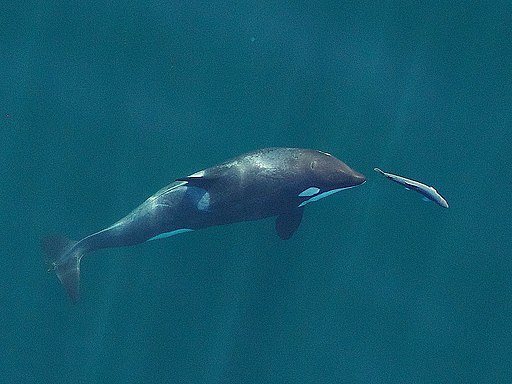The Mystery of the Entangled Oregon Orca
Posted
Last Updated
Intensive search for killer whale carcass leads to an answer hidden in its DNA.

The black-and-white pattern of a killer whale stood out to an Oregon fisherman. He was heading home to port about 30 miles southwest of Newport on June 26 at 1:47 p.m. The problem was that the striking whale was belly up—and dead.
A lone gull stood atop of the carcass, which had a turquoise and yellow rope wound tightly around its body above its tail flukes.
Over the next few weeks, the entangled orca became the focus of one of the most unusual searches ever undertaken in waters off Oregon. Biologists wanted to know more about the whale, why it died, and, most of all, where it came from.
Could the orca have been a critically endangered Southern Resident killer whale that went missing only a few weeks after its pod was sighted off Oregon? If so, it would be the first of the 73 remaining endangered killer whales known to die from entanglement in what was most likely recreational crab gear.
During the same period last summer, though, transient killer whales were sighted off Oregon more frequently than ever before, said Jim Rice, Stranding Program Manager with the Marine Mammal Institute at Oregon State University in Newport. A flourishing population of harbor seals likely attracts the transient whales, which prey on seals and could be just as vulnerable to entanglement. The population of transient killer whales along the Oregon Coast has been estimated at close to 500; researchers are trying to build a photo catalog.
In contrast, the endangered resident killer whales feed mainly on salmon and some other marine fish species. Rice was the first stranding responder to get word of the dead entangled orca, first off Newport. There was a second reported sighting of the carcass, still floating, a couple of weeks later 15–20 miles off Bandon.
At first the reports of the orca carcass generated many more questions than answers.
Then, months later, the persistent work of an Oregon scientist finally answered the question: resident or transient?
DNA Offers New Potential
Last summer’s search for the Oregon orca is a story of fleeting sightings, delayed reports, and scattered photographs. It is also a story of one determined scientist using powerful genetic tools to unravel the ultimate mystery of the whale’s identity.
What the scientist needed was a piece of its DNA.
Read more at fisheries.noaa.gov


